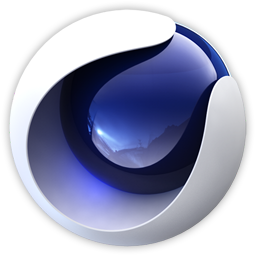Related Research Articles

Microsoft DirectX is a collection of application programming interfaces (APIs) for handling tasks related to multimedia, especially game programming and video, on Microsoft platforms. Originally, the names of these APIs all began with "Direct", such as Direct3D, DirectDraw, DirectMusic, DirectPlay, DirectSound, and so forth. The name DirectX was coined as a shorthand term for all of these APIs and soon became the name of the collection. When Microsoft later set out to develop a gaming console, the X was used as the basis of the name Xbox to indicate that the console was based on DirectX technology. The X initial has been carried forward in the naming of APIs designed for the Xbox such as XInput and the Cross-platform Audio Creation Tool (XACT), while the DirectX pattern has been continued for Windows APIs such as Direct2D and DirectWrite.

Computer-aided design (CAD) is the use of computers to aid in the creation, modification, analysis, or optimization of a design. This software is used to increase the productivity of the designer, improve the quality of design, improve communications through documentation, and to create a database for manufacturing. Designs made through CAD software help protect products and inventions when used in patent applications. CAD output is often in the form of electronic files for print, machining, or other manufacturing operations. The terms computer-aided drafting (CAD) and computer-aided design and drafting (CADD) are also used.

Autodesk Maya, commonly shortened to just Maya, is a 3D computer graphics application that runs on Windows, macOS, and Linux, originally developed by Alias and currently owned and developed by Autodesk. It is used to create assets for interactive 3D applications, animated films, TV series, and visual effects.
X3D is a set of royalty-free ISO/IEC standards for declaratively representing 3D computer graphics. X3D includes multiple graphics file formats, programming-language API definitions, and run-time specifications for both delivery and integration of interactive network-capable 3D data. X3D version 4.0 has been approved by Web3D Consortium, and is under final review by ISO/IEC as a revised International Standard (IS).
Autodesk 3ds Max, formerly 3D Studio and 3D Studio Max, is a professional 3D computer graphics program for making 3D animations, models, games and images. It is developed and produced by Autodesk Media and Entertainment. It has modeling capabilities and a flexible plugin architecture and must be used on the Microsoft Windows platform. It is frequently used by video game developers, many TV commercial studios, and architectural visualization studios. It is also used for movie effects and movie pre-visualization. 3ds Max features shaders, dynamic simulation, particle systems, radiosity, normal map creation and rendering, global illumination, a customizable user interface, and its own scripting language.

Cinema 4D is a 3D software suite developed by the German company Maxon.
TrueSpace was a commercial 3D computer graphics and animation software developed by Caligari Corporation, bought-out by Microsoft. As of May 2009, it was officially discontinued, but with some 'unofficial support' up to February 2010.
Houdini is a 3D animation software application developed by Toronto-based SideFX, who adapted it from the PRISMS suite of procedural generation software tools.

Bryce, also often referred to colloquially as Bryce3D, is a 3D modeling, rendering and animation program specializing in fractal landscapes. The name is taken from Bryce Canyon—a rugged region with many of the same landscapes that were first simulated with the software.

OpenSceneGraph is an open-source 3D graphics application programming interface, used by application developers in fields such as visual simulation, computer games, virtual reality, scientific visualization and modeling.

Motion graphics are pieces of animation or digital footage that create the illusion of motion or rotation, and are usually combined with audio for use in multimedia projects. Motion graphics are usually displayed via electronic media technology, but may also be displayed via manual powered technology. The term distinguishes static graphics from those with a transforming appearance over time, without over-specifying the form. While any form of experimental or abstract animation can be called motion graphics, the term typically more explicitly refers to the commercial application of animation and effects to video, film, TV, and interactive applications.

RealFlow is a fluid and dynamics simulation tool for the 3D and visual effects industry, developed by Next Limit Technologies in Madrid, Spain. This stand-alone application can be used in conjunction with other 3D programs to simulate fluids, water surfaces, fluid-solid interactions, rigid bodies, soft bodies and meshes. In 2008, Next Limit Technologies was awarded a Technical Achievement Award by the Academy of Motion Picture Arts and Sciences for their development of the RealFlow software and its contribution to the production of motion pictures. In 2015, Next Limit Technologies announced the release of RealFlow Core for Cinema 4D.

Softimage|3D is a discontinued high-end 3D graphics application developed by Softimage, Co., which was used predominantly in the film, broadcasting, gaming, and advertising industries for the production of 3D animation. It was superseded by Softimage XSI in 2000.

AmigaOS is a family of proprietary native operating systems of the Amiga and AmigaOne personal computers. It was developed first by Commodore International and introduced with the launch of the first Amiga, the Amiga 1000, in 1985. Early versions of AmigaOS required the Motorola 68000 series of 16-bit and 32-bit microprocessors. Later versions were developed by Haage & Partner and then Hyperion Entertainment. A PowerPC microprocessor is required for the most recent release, AmigaOS 4.
3D computer graphics software refers to packages used to create 3D computer-generated imagery.

In 3D computer graphics, 3D modeling is the process of developing a mathematical coordinate-based representation of a surface of an object in three dimensions via specialized software by manipulating edges, vertices, and polygons in a simulated 3D space.
Maxon Computer GmbH is a German software company that produces software for content creators. The company’s product lines include the 3D software Cinema 4D, the Red Giant tools for editing, motion design and filmmaking, Redshift renderer and the digital sculpting and painting software ZBrush as well as the mobile sculpting app Forger. The company’s cross-platform benchmarking application Cinebench is used by developers, reviewers and users to evaluate hardware performance.
This is a glossary of terms relating to computer graphics.
Art of Illusion is a free software, and open source software package for making 3D graphics.
References
- ↑ Lintermann, Bernd; Deussen, Deussen (January–February 1999). "Interactive Modeling of Plants" (PDF). IEEE Computer Graphics & Applications. 19 (1): 11. doi:10.1109/38.736469.
- ↑ Lintermann, Bernd; Deussen, Deussen (March 1998). "A Modelling Method and User Interface for Creating Plants" (PDF). Computer Graphics Forum. 17 (1): 2. doi:10.1111/1467-8659.00216. S2CID 14040913.
- ↑ "History". xfrog.com. Archived from the original on 2021-01-19. Retrieved 2024-03-11.